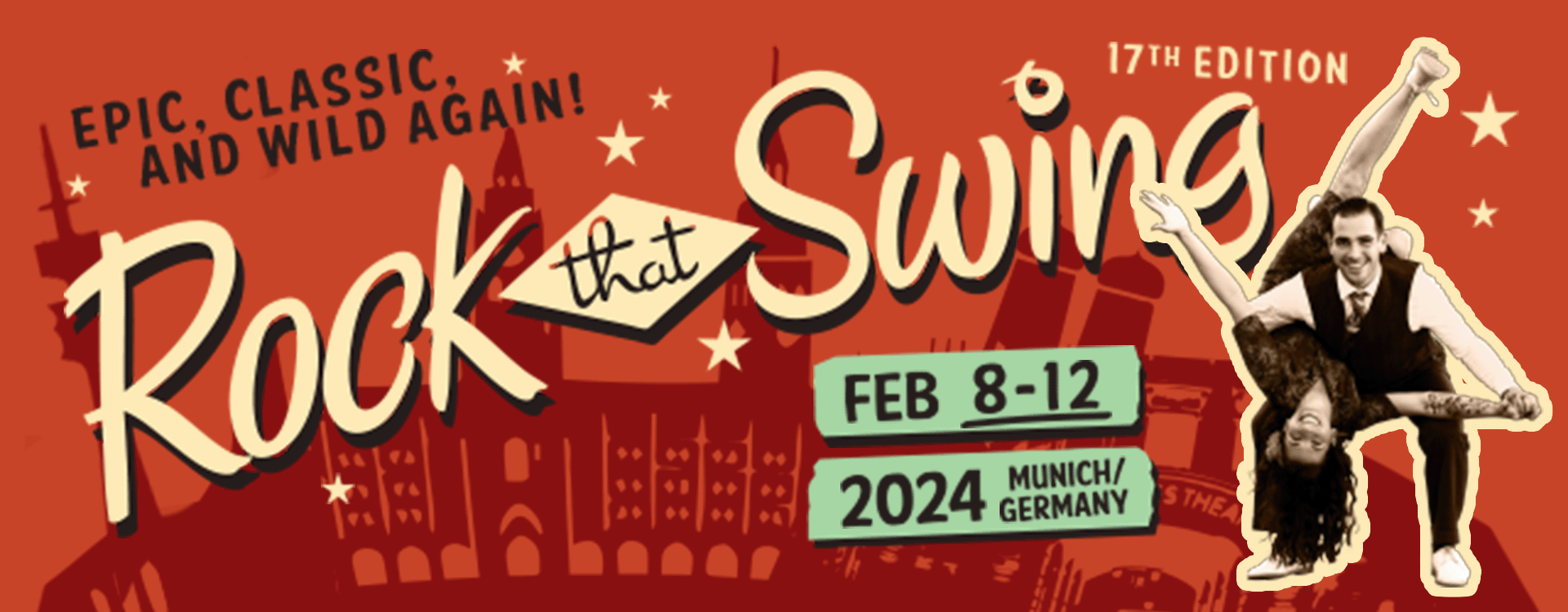Dance descriptions
The little dance dictionary
In the 30s, Swing was a term for a new and hot style of jazz music that was the catalyzer for many different dance forms. Dance forms such as Lindy Hop, Shag and Balboa changed partner dancing forever. Changes in the music have led to new variations and forms emerging right up until modern day. The following short descriptions will help you to understand the characteristics of the main dances of the 20s to 50s and also some modern forms.
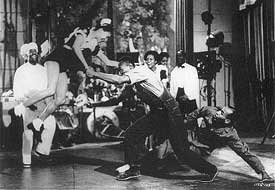
Aerial (“Air Step”)
Aerials (or air steps) are flashy dance moves where one’s feet leave the floor. Originally those movements have been called Air Steps, because they were integrated into the dance flow – therefore just another step, but in the air.
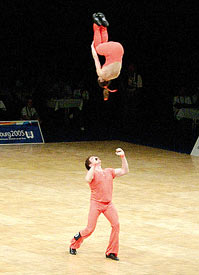
Acrobatik Rock’n’Roll
Acrobatic Rock’n’Roll is a sportive development from the 50s Rock’n’Roll that is mainly danced in Europe. It became a pure competition and show dance with emphasis on high and complicated aerials – comparable to the cheerleader dance in the USA. Nowadays it’s mostly danced to pop music. High kicks, and a lot of Modern Jazz elements are typical for this dance. It’s not a useful dance for the social dance floor.
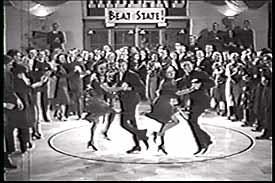
Balboa
Balboa is known for its smooth, tight footwork with a lot of shuffling, and “chest to chest” close dancing position. It is said that Balboa dancers were not allowed to break-away from the closed position and that they were the ones who dressed up and didn’t want to sweat. The Balboa has an 8-count basic and is well suited for fast tempos, though it was said a good Balboa dancer could Balboa at any tempo. It is probably based on the Foxtrot and/or the Charleston and was born in the 1930’s in Southern California, on Balboa Peninsula, due to crowded dance floors. The Pavilion and the Rendezvous Ballroom were the hot places.

Bal-Swing
When the hot swing music really hit the scene some of the younger dancers added break-aways, swing turns and drops to the Balboa. This dance was simply called Swing, but is nowadays referred to as Bal-Swing. The term, Balboa-Swing, didn’t actually come around untill the 70s refering to the style being like traditional Balboa intersperced with some swing elements. This increased energy level was made famous by “Ray Rand Swingers” of Southern California and dancers like Maxie Dorf and Lolly Wise.
Ballroom Jive
Ballroom Jive belongs to the five international Latin dances. It is the ballroom version of Jitterbug and English Jive and is danced to old, but mostly modern Rock’n’Roll music. It has its roots in the Lindy Hop, but often has an artifical look. In competitions it is danced at a speed of about 44 bars per minute (176 bpm). It can be danced slower, but hardly faster.
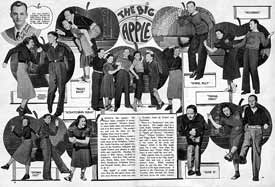
Big Apple (1935)
Big Apple was a popular group dance that was primarily done in a circular format and where the steps were called out. Its origins can be traced back to a Southern club called “The Big Apple”. The Big Apple was similar to a Square Dance, but used the popular steps of the time, like Charleston, Suzie Q, Shag, Truckin’, Spank Yo’ Horsey, Piggy Back, Organ Grinder’s Swing and Scratchin’ Fleas. In the spring of 1937 the Big Apple was THE fashionable dance in the whole country.
For performances usually routines were used. One version choreographed by Frankie Manning can be seen in “Jitterin’ Jitterbugs” and enjoys great popularity. In the last years the free called version became increasingly popular again, too.
Blues
Blues dancing is about emotion. It is a very personal and intimate, stylish and expressive form of dance. It is very suitable for slow music, particularly jazz and blues. Blues dancing remains strongly entrenched in African principles of movement.
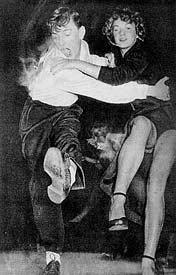
Boogie Woogie
Boogie Woogie is the name for a music style and different dance styles. In the USA Boogie Woogie is used as a term for Vernacular Jazz Steps. In Europe Boogie Woogie is a 6-count dance style that is a progression of the Jitterbug, Lindy Hop, and Rock’n’Roll of the 50s which were brought to Germany after the war with the GIs. It is famous for its spectacular and fast footwork. There is a large number of social dancers, but also high-class international competition couples. Boogie Woogie is danced mainly to music of the late 40s and 50s (e.g. Boogie Woogie, Rhythm’n’Blues, Rock’n’Roll, Rockabilly, Jive). Boogie Woogie allows a lot of space for free styling and improvisation. It is rich in typical figures and steps and many other dances have “borrowed” steps from Boogie Woogie. On the other hand many moves of other swing styles have been incorporated in Boogie Woogie in recent years too.
Bugg
Bugg is a common dance style in Sweden and very popular on the dance floors and in competitions. Bugg is very simple, because the basic consists only of four walking steps. It is danced and performed in a various pace (120-180 BPM). Even Bugg follows certain basic rules, it is essentially improvised, with the woman following the man’s lead. Acrobatic moves are not allowed. Swedish Bugg belongs to the swing dance family and closely resembles Modern Jive.
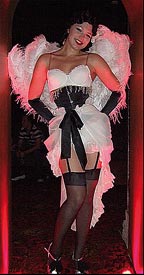
Burlesque
Burlesque is a type of performance done by females bringing together a sizzling dance style with elaborate vintage costumes, cool retro tunes and a lot of sassy fun! It incorporates elements of vintage jazz dance, solo blues, exotic Eastern, African and Latin styles, chorus line dancing and Vegas showgirl, together with the theatricality of vaudeville and the art of "The Tease".
California Routine
The California Routine is a Lindy Hop routine that Frankie Manning choreographed for Whitey’s Lindy Hoppers in the beginning of the 40s. It is common knowledge among many dancers and show groups.
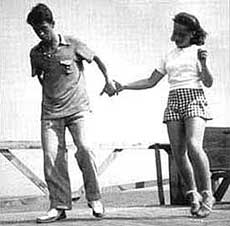
Carolina Shag
Carolina Shag (also known as Florida Beach Bop or New Orleans Jamaica) originated at the same time as Lindy Hop, but in the South of the USA. Early Shaggers called themselves “Jitterbugs”. The music was fast and it was Big Band Swing. The term “Shag” came about over a decade later. By the early 50s Shag had slowed way down and adopted the tempo and feel of Rhythm’n’Blues as its own. It is danced to Blues and Beach music and is embodied by cool, intricate footwork. It is said that it was designed to hold your beer and cigarette while dancing at the same time.
Ceroc (Le Roc)
Ceroc (Le Roc) is a recent form of modern partner dancing that can be danced to almost any music. It’s a French form of Modern Jive that has turned out to be very popular. There is very little footwork taught, so it is considered to be easy to learn.
Jazz Steps (Boogie Woogie)
Jazz Steps are solo steps of the American Vernacular Jazz repertoire. Those steps were originally called Boogie Woogie by the dancers. This resulted in names like Boogie Back and Boogie Forward. There exists a vast richness of those steps. Well-known steps are for example Shorty George, Suzy-Q, Fall of the Log, and Apple Jacks.
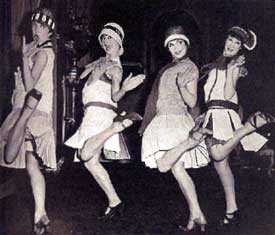
Charleston (1923)
Charleston is a fun, flamboyant and very energetic dance from around the 1920s that can be danced with or without a partner. Despite its black history, Charleston is most frequently associated with white flappers and the speakeasy. 20s Charleston steps are often incorporated into Lindy Hop.
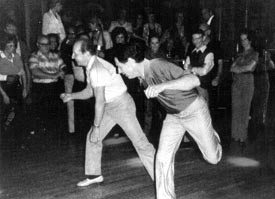
Dean Collins Shim Sham Version
Dean Collins Shim Sham Version
The Dean Collins Shim Sham Version is based on the original Shim Sham from Leonard Reed and Willie Bryant. The first part complies with the original, but is enriched with a few tricky break changes. The second part is totally different and contains Dean’s typical jazz elements (e.g. Tabby The Cat, Shorty George, Savoy Kicks). Dean’s version is more ostentatious than the original version.
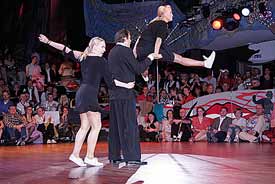
DoubleBugg
Double Bugg is a Swedish swing dance. It’s mainly a choreographed small formation dance for competitions, but also can be danced per lead and follow. It has its background in the Bugg, another Swedish dance style. Double Bugg is danced by three persons, mainly a man and two women. The character is free and is retrieved from other swing dances that are danced in Sweden like Bugg, Lindy Hop, Boogie Woogie, and Acrobatic Rock’n’Roll. Good footwork is preferred in Double Bugg. It is mainly danced to modern Pop or Rock’n’Roll music.
East Coast Swing
East Coast Swing - also known as Eastern Swing - is a social partner dance that evolved from the Lindy Hop with the work of the Arthur Murray dance studios in the 1940s. East Coast Swing is strictly based on six-count patterns. It is a standardized form of dance that was developed to allow for a medium of comparison for competitive ballroom dancers in the US. Therefore the name East Coast Swing was coined to initially be a divider between the street form (Eastern Swing) and the new variant (East Coast Swing) used in the competitive ballroom arena, as well as separating the dance from West Coast Swing, which was developed in California. East Coast Swing has been heavily influenced by Charleston and Lindy Hop which has changed the dance.
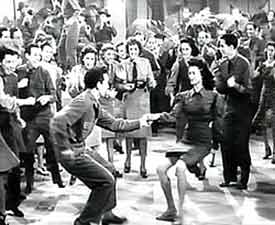
Hollywood Style Lindy Hop (Smooth Style, LA Style, Dean Collins Style)
In the 90s Erik Robinson and Sylvia Skylar coined the name “Hollywood Style Lindy Hop” as a term for the Lindy Hop styles danced in the Los Angels area in the 30s and 40s. It is also associated with the Hollywood movies at that time, in which white dancers like Dean Collins, Jewel McGowan, Hal Takier, Lennie Smith, Irene Thomas, or Jean Veloz can be seen.
Dean Collins learned Lindy Hop in the Savoy Ballroom. End of the 30s he moved to Los Angeles and changed the dance scene there fundamentally. He and his dance partner Jewel McGowan danced in more than fifty movies. Typical figures are Whip, Sugar Push, Switches, and Quickstop. In the 50s the Lindy Hop experienced a renaissance and adjusted to the harder and jumpier Rhythm’n’Blues and Rock’n’Roll music as you can see for example in the Bill Haley movies.
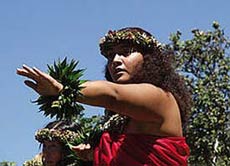
Hula
Hula is a dance form accompanied by chant or song. It was developed on the Hawaiian Islands by the Polynesians who originally settled there. The hula dramatizes or comments on the mele. There are many styles of hula.
Imperial Swing
Imperial Swing is a dance style native to St. Louis. It has the name Imperal Swing because it was nurtured in the Imperial Dance Club on Florescent Street in St. Louis. It is a variant of Eastern Swing with a six-count step basic, but also includes eight-count steps similar to the Lindy Hop.
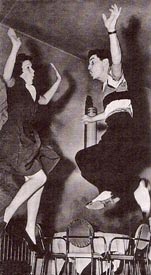
Jitterbug
In 1934 the famous band leader Cab Calloway called a certain style of the Lindy Hop “The Jitterbug”. After that it became a synonym for Lindy Hop. By the 40s, but especially nowadays, the term Jitterbug is used for very different dance styles.
Jitterbug Stroll
Jitterbug Stroll is a line dance based on early jazz steps from the swing era. It was created by Ryan Francois for the dance club “Jitterbugs” in London. Ryan used the tune “Woodchoppers Ball” by Woody Hermann, but the Jitterbug Stroll can be danced to any song written in a Blues Chorus format (12 bars per chorus). Steven Mitchell later wrote and recorded a song where he called the steps.
Laminu
Laminu is a slow form of the Balboa. The origins of the Laminu seem to be shrouded in mystery. Clearly, it arose in California in the late 1940s, and was most probably conceived by dancers who were already dancing the Balboa (given the similarities of the two dances).
Lindy Chorus
Lindy Chorus is a routine to the tune “Wednesday Night Hop” by Andy Kirk choreographed in the 90s by Frankie Manning.
Lindy Hop
Considered the grand daddy of most swing dances, the Lindy Hop originated in Harlem ballrooms such as the famous Savoy in the late 1920’s and evolved later into many forms as Rock’n’Roll, Boogie Woogie, and Jive. It was danced to big band music and was characterized by “breakaways” in which partners in a couple separated and improvised steps individually and the Swing Out, where partners were swinging around each other, opening up at the end. The dance can be wild and spontaneous, with frenzied kicks and body movements, or it can be cool and sophisticated. Later called the “Jitterbug“, it exploded in popularity across the USA throughout 1930-1950 and has been brought into the world mostly through the American soldiers and the Hollywood movies. The Lindy Hop owes much to African American influence, particularly Charleston, Jazz and Tap steps. In 1943, Life Magazine characterized Lindy Hop as “America’s National Folk Dance”. There exist many different styles of Lindy Hop. The most well known are Savoy and Hollywood Style.
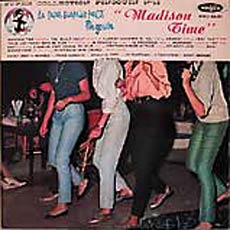
Madison
The Madison is an amusing line dance that originated in the late 1950s. It probably has its origin in Chicago. Eddie Morrison was a disc jockey from Baltimore, who started to call dance steps to the dancers. Ray Bryant then had a hit tune with “The Madison Time”. He recorded the calling of the steps on the record. The basic consists of 6 counts. The different dance combinations consist of patterns that are run down or make playful references to the big stars of that time period. There were various successful versions, but “The Madison Time” is the most well known and famous one. A version of the dance resurfaced in 1988 in the John Waters movie “Hairspray”.
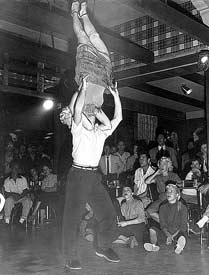
Rock’n’Roll
Rock’n’Roll was originally a name for a music style from the 50s. First called Race Records or Blues & Rhythm this music style was coined as Rock’n’Roll by the famous US disc jockey Alan Freed who had the intention to cash in on license fees when the name was used. In the USA Rock’n’Roll music revived the Jitterbug and Lindy Hop dances. In Europe the dance style that developed out of the Jitterbug after the war was called the same as the music style. Typical for the 50s Rock’n’Roll in Europe were the acrobatic jumps and lifts. The Rock’n’Roll dance had a few revivals in Europe. In the 70s the competition form and the social form began to drift apart. The competition form is nowadays known as Acrobatic Rock’n’Roll and the social form as Boogie Woogie, Jive or Jitterbug.
Rockabilly Jive
Following the change in music to more Rhythm’n’Blues and Rock’n’Roll Lindy Hop became more simplified in the U.K. and was referred to as "jiving". With a very easy basic step Rockabilly Jive is very accessible and easy to learn. It looks cool and fun. The basic for the lady is just a rock back and rock forward, while the man does a side tap, side tap. Jive appears to be hopping, but when danced well, as you hop and bounce and triple-step you keep the head level. Commonly the lead hand is pumping. It is danced to medium and fast music. It has a large followership in the Rockabilly and Rock’n’Roll scene all over the world.
Rueda
Rueda de Casino originated as a group dance in Salsa. The dancers execute steps that will switch followers in a circle and are called by a caller. A few years ago this principle was adapted to Boogie, Lindy, and Balboa. While the Boogie Ruedas are mostly based on six count moves, the Lindy and Balboa Ruedas are mostly based on 8-count moves.
Salsa
Salsa (span.: sauce) is a music and dance style which developed in New York in the mid 1960s and consists of a mixture of different rhythms with folkloric elements. The actual roots of Salsa can be found in the Son of the 20s and even earlier in the Danzon. Both music styles come from Cuba. In the 30s in New York well-known musicians (e.g. Tito Puente) changed the Danzon into Mambo sound. Nowadays there are many different dance styles in Salsa: The most popular ones are the Cuban Style and the New York Style, but also the Puerto Rico Style, the L.A. Style, and the Latino Style is steadily gaining popularity.
Savoy Style Lindy Hop
Savoy Style Lindy Hop is the term used to describe Lindy Hop associated with the dance style of African American dancers who frequented the Savoy Ballroom in Harlem in the 1930s and 1940s. Savoy Style Lindy Hop is characterized by a high energy, kicking, rotating style and the incoporation of various jazz elements. The driving force for Savoy Style has been Frankie Manning. He brought the dance position down and created the typical flying look when danced fast. He took the dance to the performance level doing the first air step and introducing ensemble dancing. Until his death at an age of 94 he travelled the world to spread the word and show the dance. The best Lindy Hop performance sequence that ever has been on film can be found in “Hellzapoppin’” where Whitey’s Lindy Hoppers (with Frankie Manning) dance to 81 bars per minute (324 BPM) with breathtaking aerials.
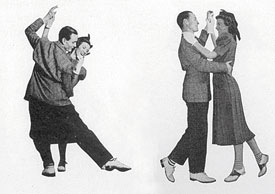
Shag (Collegiate Shag)
Shag is one of the classic three major Swing Dance forms (Shag, Lindy Hop, Balboa). It even was spread all over America some years before Lindy Hop became popular. It consists of a lot of hops and kicks and is danced a lot in closed positions but also has open elements. It can be danced from medium to very fast music.
Different styles were popular in different regions. The different forms of Shag are referred to as Single, Double, and Triple Rhythm Shag. The different names describe how many slows will be danced. Single Rhythm Shag has been a very dominate style in the Swing era. Nowadays the most common form of Shag is the Double Rhythm Shag. It’s based on 6 counts (like Boogie Woogie) and with a simple Slow, Slow, Quick, Quick this form of Shag is very easy to learn. Shag was the hottest dance among the college kids in the 30s, that’s why some styles were called “Collegiate Shag”. Shag is not to be mixed up with Carolina Shag or St. Louis Shag.
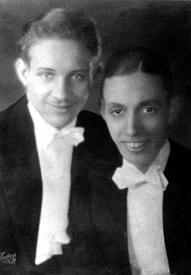
Shim Sham
The Shim Sham originated as a tap dance choreographed by Leonard Reed (1907-2004), and Willie Bryant in 1928. Intended for a show finale that could be done by all the performers it had to be easy enough for all artists to learn. From there on the Shim Sham started its triumphal procession and became one of the most well-known and wide-spread routines of all times.
Originally called Goofus it was later named after the Shim Sham Club in Harlem. Nowadays many various tap and non-tap versions are an integral part of big shows. The Shim Sham is the national hymn of the tap dancers. Leonard Reed later created the Shim Sham “Freeze Chorus“, “Shim Sham 2“, and “The Revenge of The Shim Sham”. Frankie Manning spread a non-tap version in the Swing community.
St. Louis Shag
St. Louis Shag is a unique dance from St. Louis with a bouncy step that swivels in and out very much like the Charleston. It has patterns with kicks and jumps and can be done to very fast music.
The Stroll
The Stroll was a popular line dance in the 1950s. It was first performed to “C.C. Rider” by Chuck Willis on American Bandstand. The songs used for strolls are written in a slow Blues Chorus pattern. In the dance, two lines of dancers, men on one side and women on the other, face each other, moving in place to the music. Each paired couple then steps out and does a more elaborate dance up and down between the rows of dancers.
Swing
Swing was originally a term for a music style. Nowadays Swing is an umbrella term for the different swing dance forms. It can be used in a narrow meaning – dance forms of the swing music era – or in a broader context – including all later and modern progressions.
Swop
Swop is a mixture of Swing and Hip Hop. Swing elements are danced to Hip Hop music and Hip Hop elements to Swing music.
Trankey Doo
The Trankey Doo is a jazz line dance composed from a female dancers’ steps from the 1940s named Trankey Doo! The two most common versions are the routines by Frankie Manning and by Pepsi Bethel, Al Minns and Leon James. Originally done to “Tuxedo Junction” by Erskine Hawkins it can be danced to any swing song with classic 32-bar AABA structure. Along with the Shim Sham and the Big Apple, the Trankey Doo was a staple of the Savoy Ballroom in the 1940s.
Vernacular / Authentic Jazz
Vernacular refers to indigenous dance forms created within a community and derived from native traditions, common social exchanges and a familiar culture. American Vernacular Jazz dance (also called Authentic Jazz) traces its origins to the rites of early African communities. These rites continue to evolve through social traditions danced primarily within African-American communities. Examples include Cakewalk, Charleston, Tap, Swing, Mambo, Blues, Break Dance, Salsa and Hip Hop.
West Coast Swing
West Coast Swing is a smooth and stylish form with Lindy Hop roots that originated in California, and has been described as a mixture of Latin and Jive. It uses the same basics as the Swingout/Whip, Sugar Push, and Passes and can be danced with both six and eight-beat patterns. Originally danced to Swing music it is nowadays mainly danced to Country Music, slow Rhythm’n’Blues, and even music of the pop charts. In this process it has lost much of its swing feeling.
